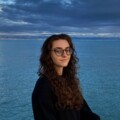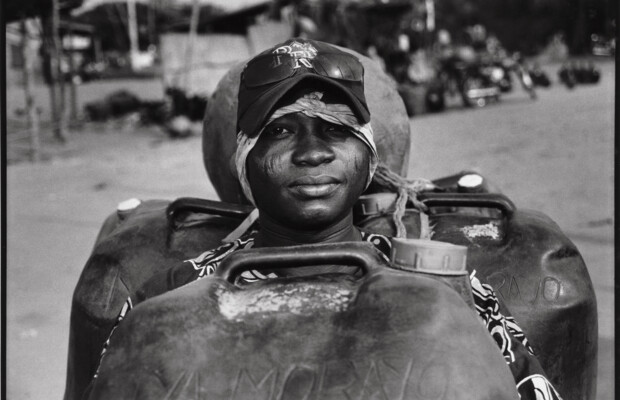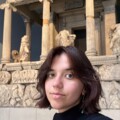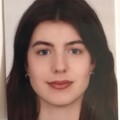Interview at Zolforosso Studio
Artist Collectives Series
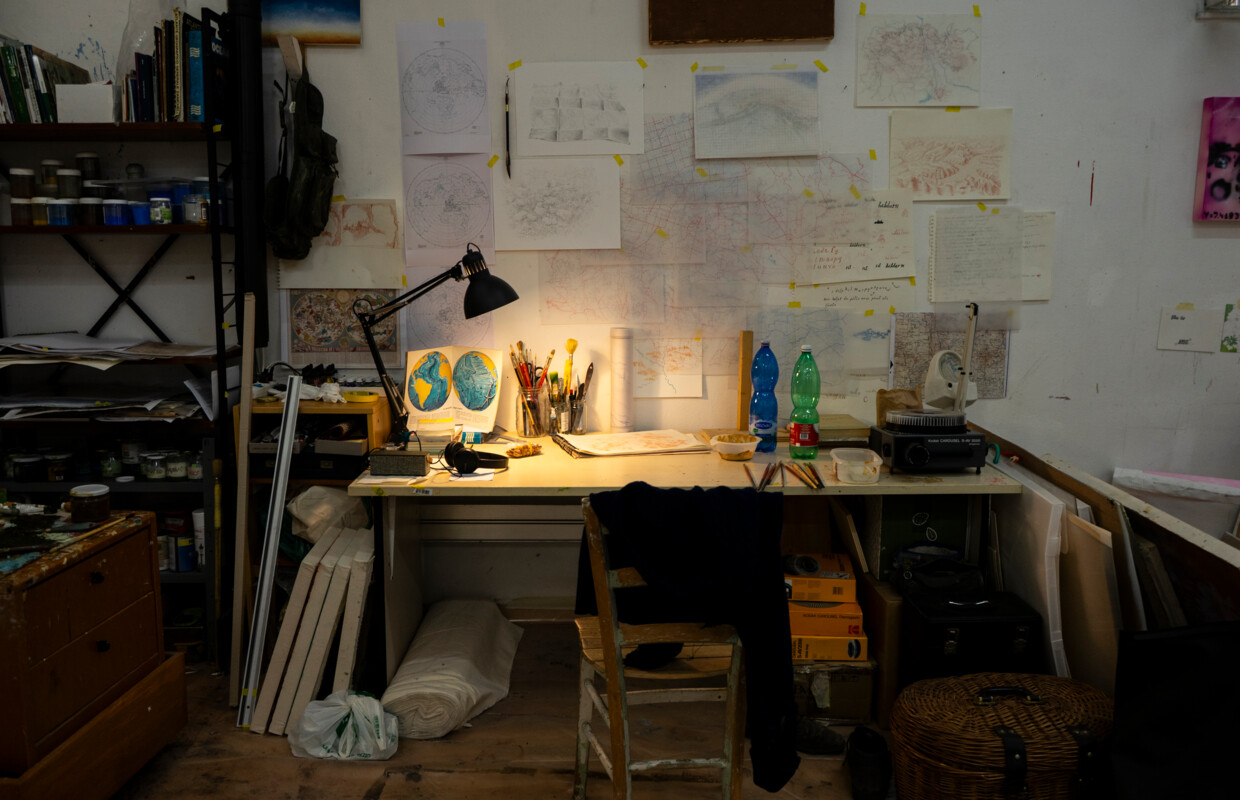
Venice, with its history and vibrant artistic scene, has long served as a source of inspiration for artists from all over the world. It stands as a genuine breeding ground where creative and cultural development has flourished since time immemorial. Artists and collectives worldwide are drawn to Venice and its neighboring cities, seeking to immerse in this environment rich in cultural influences.
Here in the cradle of art and culture, I had the opportunity to meet the members of Zolforosso, a Venetian artist collective, born in 2017, currently made up of around 20 artists and a few in-house curators.
Riccardo and Alessandro kindly welcomed me into their studio, full of paintings and canvases. This place reflects the dedication and creative vision that drive their projects. Everything is managed between three spaces: the first one in Venice, the second one in Mestre, and Terzospazio, in Santa Croce (Venice), serving as their exhibition space where projects, exhibitions, conferences, and more take place. Indeed, for Zolforosso, art does not just imply some exhibition concept, but embodies knowledge, inclusion, and above all, the spirit of sharing.
Talking with Riccardo and Alessandro, I took notice of their great ambitions, strong determination, and aim of making a difference in an artistic environment that is not always easily penetrable. Despite all the challenges, their passion for art that they strive to share with the world has led Zolforosso to become a thriving artistic hub.
Our discussion delved into various important topics, such as teamwork management of the studio, the challenges young artists face today, and themes dear to the collective.
Zolforosso is an artistic reality that, in its own personal way, has managed to build a solid identity through hard work, unwavering dedication and numerous sacrifices, in a competitive and complex environment, establishing themselves as a formidable presence in the artistic scene of the Serenissima.
Greta: General questions about the collective (date and place of foundation, how many artists are involved?)

Riccardo: Zolforosso was born in Venice in 2017 from an initial group of 6 former students of the Academy of Fine Arts of Venice who needed to find a workshop, a studio to continue their daily practice in art. This was the first need: to find a protected space where they could expand their research. Soon after, we realized that we also needed to offer a cultural proposal to the city. For example, we noticed that the Biennale tended to overshadow those who lived in the city of Venice, the local community. It has always been perceived as an external thing, coming from outside, which in turn focuses on the external, while those who work in Venice in the artistic field paradoxically have always had little visibility.
Anyway, we are about twenty, we also have some curators, and we move between 3 spaces (of which we have a headquarters in Venice, one in Mestre, and Terzospazio in Venice, in Santa Croce). We got the first headquarters in Venice in 2017, then in 2019 we applied for a call from the municipality to receive a third space because we were a bit tight, but then we heard nothing more, then in 2020 we took this space in Mestre (while still keeping the other one) because in Venice the spaces are always small and the rents very high, and we needed to expand further. Then in 2021 we got the keys to Terzospazio.
Gabriele: The number of members (among artists and curators) is constantly changing, between those who stay, leave, come and go. Zolforosso is not just a shared artist studio but a self-organized reality managed collectively, which carries forward a political, social, and cultural commitment. Since 2022 it has been part of COME COME, a network of independent spaces that inhabits and enlivens the city of Venice.
Riccardo: Zolforosso defines itself as an artist-run studio, we struggled to give ourselves a definition, some speak of an artist collective, others of a Cultural Association, but it's a bit more complicated than that, because ours is a somewhat hybrid project, a thing in constant change, and this definition was the one that came closest to our reality; even the fact that we move between 3 spaces makes it a bit more complicated to define ourselves.
So there are a certain number of personalities, of artists who have their own individual research that they carry forward individually, but when it comes to building something like Terzospazio, where there are certain guidelines, we act more as a true art collective, as if we were a self-organized community, this is what we are in the end, a community without a precise hierarchy.
G: Zolforosso is a particular name, what is the meaning behind it, and how did the idea come about?
Riccardo: The name is an alchemical reference.
Red sulfur (Zolfo rosso) in the alchemical process is a component as dangerous as it is necessary:
the precipitation of the Idea into Matter that precedes the creation of gold. Like an alchemist, the artist experiments by making transmutations, seeking new meanings, relationships, ecosystems, cosmogonies, acting on both the surrounding matter and one's own unconscious. In this laboratory - which is incessant human activity (Tätigkeit) - the constant merging and separating that undermines the hierarchical divisions between the microcosm and macrocosm, the spiritual and the material, the soul and the body.
It is essentially a metaphor for artistic creation, which is why we chose it, it is the fulfillment of the work of art: when you get your hands dirty to create something.
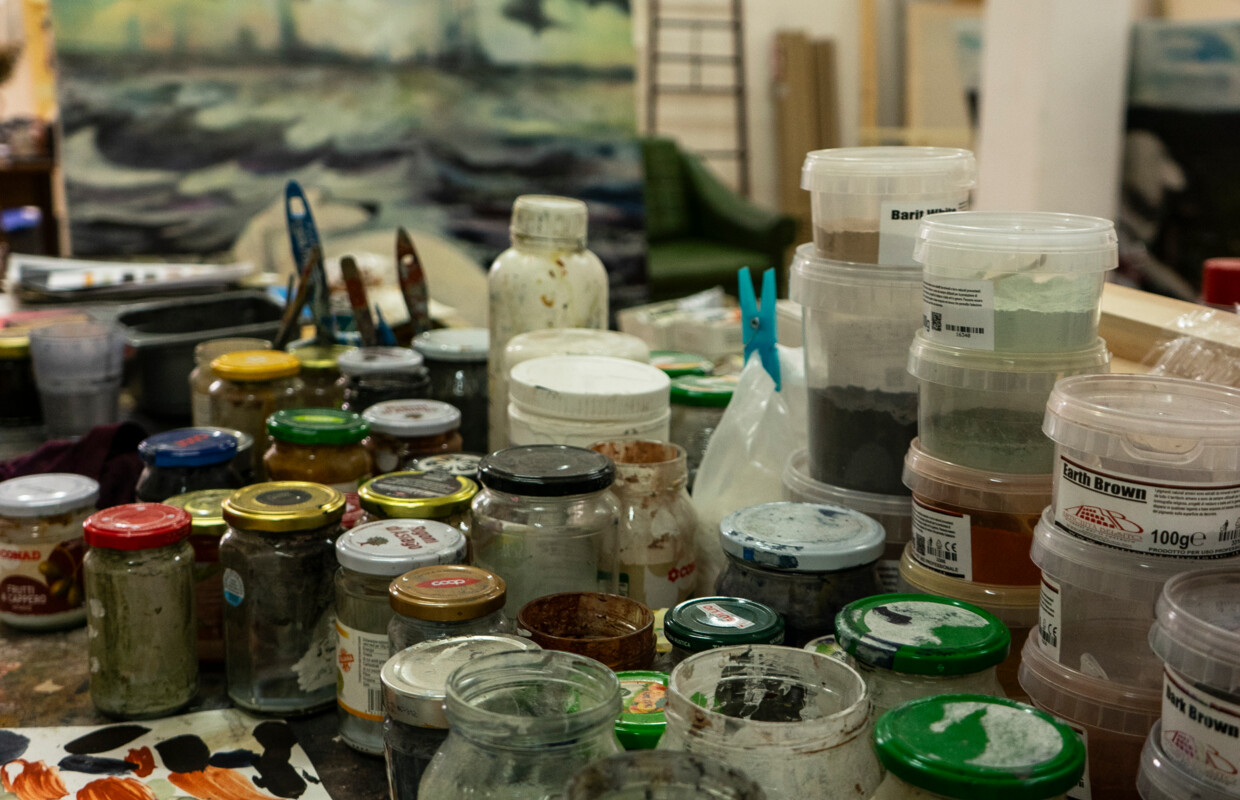
G: You exhibit artworks in your studios, how does the artistic selection process work?
Gabriele: Our public restitution space is Terzospazio (Thirdspace). This branch of Zolforosso, whose name, in addition to being tautologically explicit in signaling that it is the third space managed by us, refers to the Manifesto del Terzo paesaggio (Third Landscape Manifesto) (2005) by Gilles Clement.
The third landscape is the interstice, the fold, the margin, the fragment, the in-between space, a place of crossings. It is here that it is possible to generate new relationships, alliances, ecosystems that exist outside and beyond existing dynamics, which we intend to criticize. The selection is initially established by a factor of proximity, gravitation, magnetism, relationship, and gradually expands with the involvement of the artists participating in our activities. It is a space of research, gestation, where even the artwork and artistic practice are made available for comparison, exchange, dialectics, deepening, and doing together.
Riccardo: As I was saying earlier, we have a group of curators, including Giulia Mariachiara Galiano, Alessandra Cozzi, and Gabriele Longega, who is an artist from Zolforosso who also collaborates as a curator now.
Terzospazio has its own independent programming because it is solely an exhibition space and is used precisely to make research more visible, not only from individual Zolforosso artists but especially from various external collaborations. For example, in December, Giulia and Martino de Vincenti (former curator) curated this exhibition entitled "Dispensa'' in which they put in relation an artist from Zolforosso with an external artist who could be proposed by them, or by an artist from Zolforosso. But it wasn't just about putting on a show, the idea was to make the artistic process much more visible, so more residencies were called in to get more into the heart of the process and look at it more closely, seeing how a thought, an exhibition is born and developed, without necessarily reaching a finished project, inviting also external people to talk like students or professors, students from IUAV and Ca' Foscari were invited in order to create more participatory moments with the public, always to get out of this closed dimension of the finished exhibition, in order to allow people more external to it to enter the process.
This is a bit about Terzospazio, while in the workshops it is a bit more difficult to organize exhibitions so we prefer to have Open Studios, for example, a fixed appointment to which we have always adhered is the Art Night, in which usually we participate with our workshop in Venice and also this year we will definitely participate.
G: How do you manage teamwork within the artist collective? What are the pros and cons of working together?
Riccardo: Even regarding teamwork, we try not to have too rigid rules. Practical things like cleaning in the studio are also based on individual common sense. Taking care of the space where you live daily is something everyone should do. Then each of us has another job, so it's difficult for all of us to be together in the studio every day. We're all in the same situation, so everyone does what they can. However,
the great thing about being in a group is the constant and daily comparison while working. I find it important, especially in artistic work, to have a comparison with other people because it can enhance one's own work and that of others.
It's something that stimulates mutual work, so this is definitely the advantage of working together. Another very important aspect is conviviality; here, we often have lunch together or have dinners. This is also important because it's part of living in a place.
Gabriele: Zolforosso, despite being registered as a social promotion association at the bureaucratic-administrative level, has an internal policy based on the absence of hierarchies: anyone can, within the limits of their availability and ability, be responsible for and manage aspects of collective work. We prefer self-regulation and self-responsibility practices, allowing for a continuous redistribution of tasks and roles. Of course, this entails more relational and communicative work, but it does not restrict or burden its members with excessive responsibilities. In the context of contemporary Italian art, the work issue – in terms of economic sustainability, precariousness, and the difficulty of having one's work recognized and valued – is a delicate and challenging issue that we all face daily. One of the pros, therefore, is having a space where we can confront and support each other, feel close and "in the same boat," that narrenschiff (ship of fools) where those who refuse to acknowledge capital and its laws are stigmatized as fools and oppose it in radical denial.
G: What are the main artistic activities you carry out in your studio?
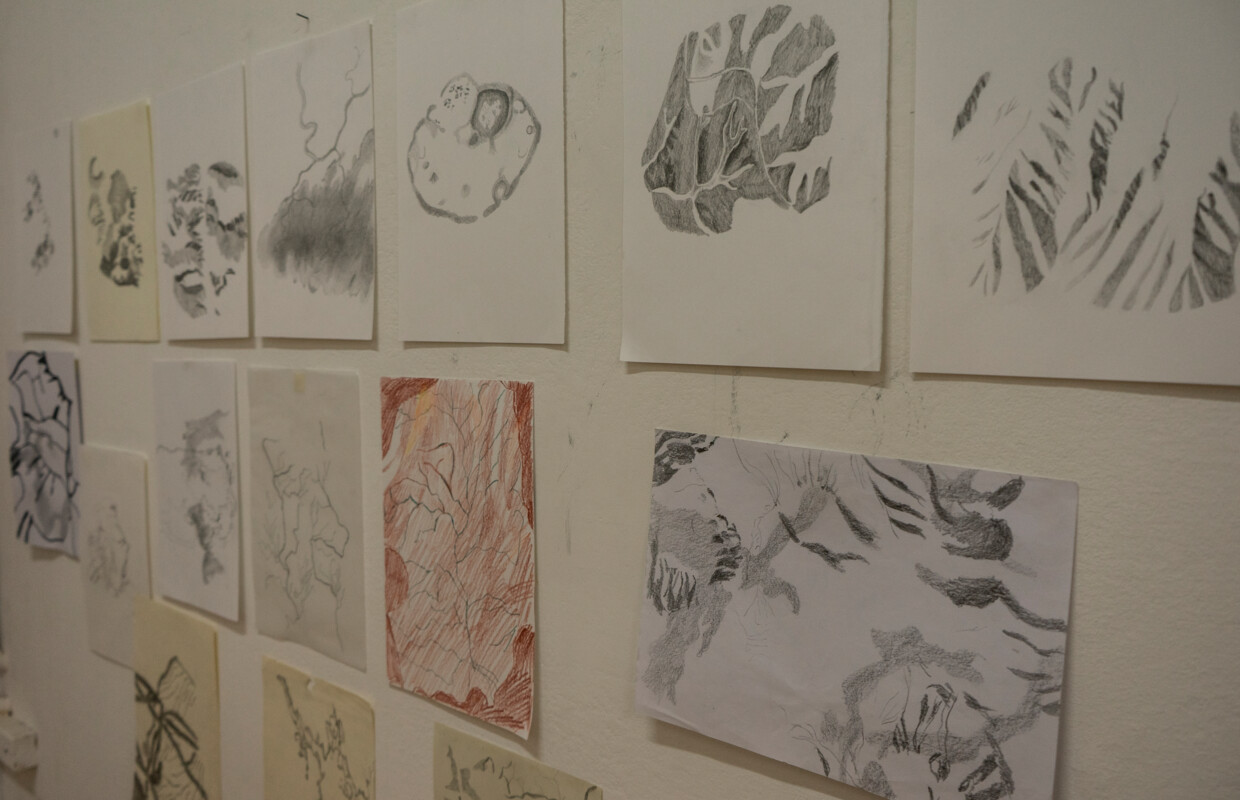
Riccardo: Really, everything; we find interdisciplinarity to be very important. There is a majority of painting because many of us come from the Venice Academy, but as soon as we graduated from the academy, we started experimenting. So, some of us do more sculpture, installations, and even videos. I also work with audio. We've even experimented with walking as an artistic practice, which is a common element for many of us. It's always interesting because everyone has their own research, but then there are threads that come together.
G: Which are the daily challenges and future goals?
Riccardo: Since we self-finance, our daily challenges are to balance all the accounts because we are a Social Promotion Association, and we always have to be careful with the budget. The main challenge is to do a lot of things with the lowest possible budget. As for future challenges, we definitely want to continue as we have until now. We've been active for 7 years, and when we were born in 2017, there weren't many realities like ours. The fact that we've managed to reach 7 years means we're heading in the right direction, so we want to continue maintaining a high level and grow even more.
Gabriele: Our daily challenges as Zolforosso mainly concern sustainability in terms of time and economy, to contribute to coordinating and carrying forward the planning of quality public cultural activities (open studios, exhibitions, talks, performances, etc.) that actively involve the people around us. Future goals and daily challenges overlap in a way of proceeding that follows the organic nature of our lives, difficulties, and dreams. Simply put, considering its complexity, keeping Zolforosso alive for as long as possible.
G: Throughout history, there have been numerous artist collectives that have played a significant role in promoting socially important themes. For instance, the Guerrilla Girls group fought for gender equality and for the inclusion of women in the visual arts world. Are there any important messages and topics that matter to you?
Riccardo: Certainly, the environmental theme is important. In the past, we have also participated in various events like "No Big Ships" or even some events regarding workers in the art world. At the beginning of the year, we started working on a series of Palestinian documentaries, and it's a series that will continue.
Gabriele: The nature of our reality, which operates in the cultural and social sphere of the city involving citizenship, is inherently political. Our way of being together, a collectivist practice – where without hierarchies there is a redistribution of work and resources – is a clear statement regarding the socio-economic world in which we find ourselves. Zolforosso's artists, while maintaining heterogeneity, are very attentive to issues addressing social and community issues, radically experimenting in the educational and pedagogical field through art and culture, contributing with participatory, dialogical, and relational practices to stimulate a critical view and discussion around present narratives
Questions for the artist
G: How did your passion for art begin?
Alessandro: That's such a good question! Everyone approaches art in their own way, also depending on how they experienced it. The first common approach for many of us starts from childhood, and it's something you carry forward, like a child who always wants to play soccer, you know? Maybe he's the captain of the team because he puts in a lot of effort; it's always a matter of practice.
So, in my opinion, there's already a certain awareness at the outset, and then, as you grow up... (this is my experience) during adolescence there's a moment of confusion when certain things are questioned. But then, as you move past adolescence, you gain greater awareness of what you want to do because this passion persists throughout this growth phase. Then you carry it forward even thanks to school; we went to the Academy, we all come from a super Atelier! So, even University, in my opinion, has its role in creating and increasing this interest and propensity for making art.
G: How did you discover Zolforosso, and how did you join it?
Alessandro: I've been here relatively recently, since November 2023. I already knew the Zolfo guys because, as I mentioned before, we all come from the same Atelier F of Professor Carlo Di Raco. Many artists' studios in Mestre and Venice, mostly those who paint, come from that kind of environment. So, I knew the founders of Zolforosso; they always worked very well, they always set goals for themselves, and it's an association that stood out a bit for its great development. In fact, the guys managed to get these spaces by working a lot, especially Terzospazio, the exhibition space where we also hold conferences, exhibitions, and everything else. I was in another studio before, and at a certain point, I decided to come here, partly because of the space, the understanding, and the prospects for working together in the studio.
G: How do you express your creativity? Do you take inspiration from someone or something?
Alessandro: I express myself through painting, sometimes through drawing as well, although I draw less because I have a lot of work to put into my paintings. I express myself through painting because for me, it's like a sort of salvation, almost a purifying tool. If I didn't do this, I wouldn't know what else to do, just to make you understand.
For me, it's a way to bring out discussions, topics I have in my head and that maybe I can't explain in any other way.
Personally, I have a fairly narrative job, so I hope first of all that people understand what I'm trying to say, right? It's a very difficult task when you're doing art; what you see is always very subjective, and you have to try to shape the subjectivity of the observer. So, this is my goal, and I try to achieve it by creating suggestions in the images I create through figurative painting.
I draw inspiration from various artists, some from the past and others still alive. One of my favorites is Alessandro Pessoli, an Italian artist who lives in Los Angeles. Maybe his works are completely different from mine, but I understand him, it's like a target for me, a point of arrival. His career is somewhat exemplary because, seeing the development of his work over the years, given that he has more experience than me, I believe we have the same kind of goals we want to achieve.
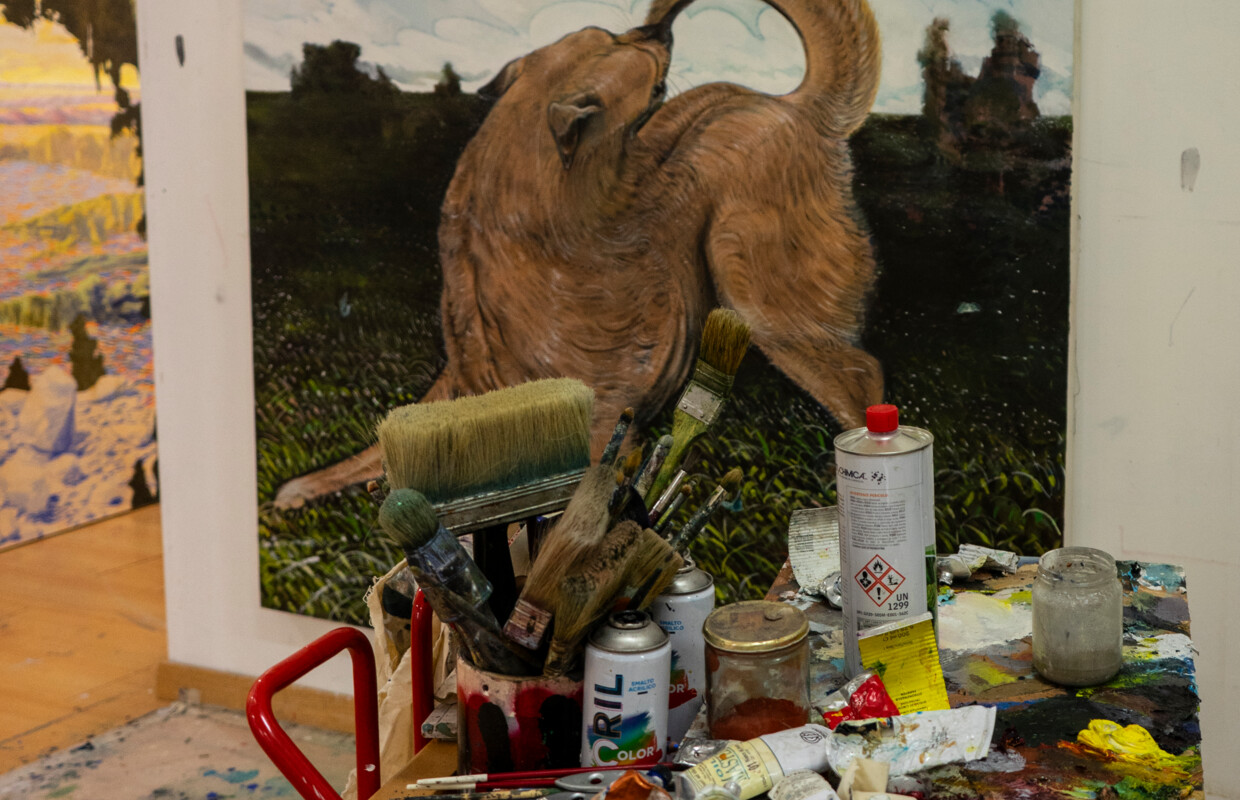
G: Do you think artistic collectives could be important to guarantee artists’ empowerment?
Alessandro: They are definitely important, everything that is collective is very important. For me, painting is not just an individual activity. Let me go back to talking about the Atelier, because even that is a place of sharing, it's one of the rules that were inside and actually our studio is also a place of sharing, we are not here just to work or to find new solutions for Zolforosso, for example, to enlarge it and that's it. Maybe there are days when no one looks at each other's work and other days when we need to compare each other's work.
Artistic collectives are also necessary for exhibitions because it's a moment when you're part of a group and you have to participate in exhibition projects. It's all part of a very important baggage of experiences. Often artists leave at some point as they grow, if they have the chance, but in my opinion, these are very important structures for the beginnings of a career, which teach us a lot.
G: Do you think there are enough opportunities for young artists looking to break into the art world?
Alessandro: Not in Italy. First of all, I think we are a really vulnerable category, in fact, what you breathe when you're with artists is a sense of disappointment towards those who focus attention on them; I mean, we work ourselves to death for very precious things and in the end, it's as if you were doing that thing on your own, no one appreciates the hours of work. There is no union protection as there is in many other countries in the world, in Italy there is a work mechanism that doesn't work, it's a bit like in other companies: there are late payments for artworks, or payments that don't arrive at all, it's a very competitive world, I think it's even worse than trying to become a Serie A football player!
Riccardo: definitely worse! I'll just add something to what he said (which I agree with),
in Italy, there is simply no recognition for those who make art nowadays. Zero.
Fortunately, AWI (Art Workers Italy) was born a few years ago, which is a union for artists and workers in the art sector, but generally, there is no recognition from anyone.
G: Have you ever received emotionally significant feedback from the public?
Alessandro: Well yes, I think positive feedback happens for those who are artists throughout their careers. It's a somewhat peculiar world because it's ancestral in some ways, artists have always had their art patrons and collectors throughout history. Among the positive feedbacks, usually those that also help a lot in artistic development are the collectors, those who give financial support and believe in your work because they like it, they identify with it, and therefore want to help you on your way. As for me, there have been some works of mine that have had great feedback from the public, I am very attentive to what I hear from others, from artists and from the people I compare myself with.
So feedback is important and even more important is to see that what you do has an impact, for example, even Instagram gives you the possibility to see the impact your work has on the public.
G: Which are your daily challenges and future ambitions?
Alessandro: I want to become a billionaire (laughs)! I'm kidding, but
the goal (which I think many of us have) is to be able to participate, at least a little bit, in the art world system and to make a living from it, with a decent life.
So maybe this is the first goal, then it always depends on the artist's competitiveness, I am super competitive, I would like to have big exhibitions and participate in ambitious projects.
Share the post:
